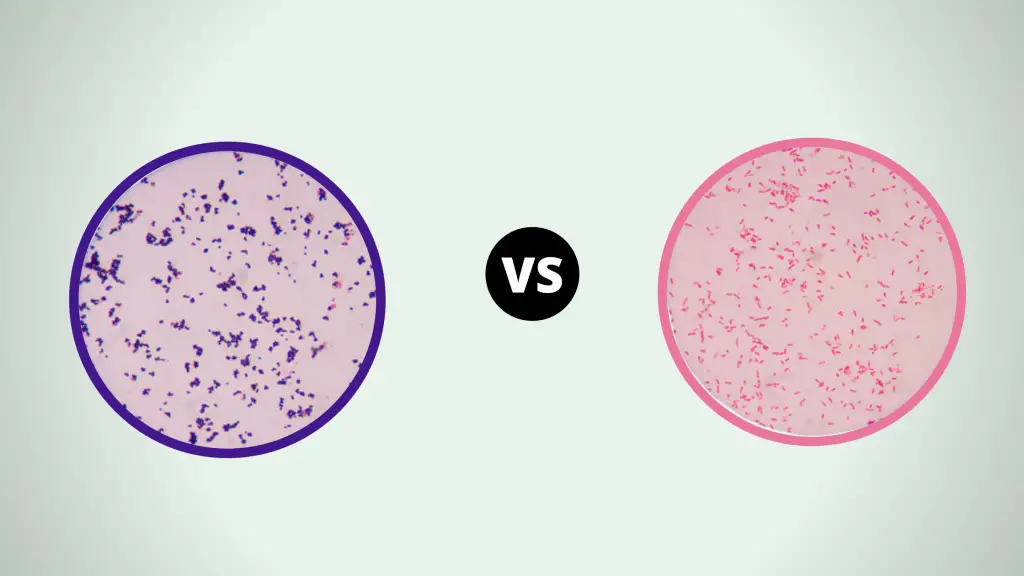

Then iodine (I -) will be used to form a large complex (CV-I) with CV and thereby bind the stain to the bacterium. Crystal violet (CV +), which is the primary dye binds to the negatively charged groups on the bacteria and stain them purple. Gram negative bacteria have a much thinner cell wall and also an outer membrane. Gram-positive bacteria have a thick cell wall (peptidoglycan), which consists of several layers and can be likened to a network. These two groups are gram positive and gram negative bacteria, which are stained purple and pink to red, respectively. This teaching activity uses a step-wise process to aid the student in familiarity with the use of the microscope as well as to increase the success rate with which they are able to stain and view microorganisms.Gram staining is a so called differential staining techniques, since one can distinguish two major groups of bacteria by this method.

Add Gram's iodine for 1 minute- this is a mordant, or an agent that fixes the crystal violet to the bacterial cell wall.Rinse slide with a gentle stream of water for a maximum of 5 seconds to remove unbound crystal violet. Add the primary stain (crystal violet) to the sample/slide and incubate for 1 minute.Heat fix the sample to the slide by carefully passing the slide with a drop or small piece of sample on it through a Bunsen burner three times. Make a slide of cell sample to be stained.Iodine solution/Gram's Iodine (mordant that fixes crystal violet to cell wall).However, the decolorized Gram negative cells are stained red. Since the safranin is lighter than crystal violet, it does not disrupt the purple coloration in Gram positive cells. A counterstain, such as the weakly water soluble safranin, is added to the sample, staining it red.Conversely, the the outer membrane of Gram negative bacteria is degraded and the thinner peptidoglycan layer of Gram negative cells is unable to retain the crystal violet-iodine complex and the color is lost. The large crystal violet-iodine complex is not able to penetrate this tightened peptidoglycan layer, and is thus trapped in the cell in Gram positive bacteria.

A decolorizer such as ethyl alcohol or acetone is added to the sample, which dehydrates the peptidoglycan layer, shrinking and tightening it.This complex is a larger molecule than the original crystal violet stain and iodine and is insoluble in water. Next, a Gram's iodine solution (iodine and potassium iodide) is added to form a complex between the crystal violet and iodine. Cells are stained with crystal violet dye.Due to differences in the thickness of a peptidoglycan layer in the cell membrane between Gram positive and Gram negative bacteria, Gram positive bacteria (with a thicker peptidoglycan layer) retain crystal violet stain during the decolorization process, while Gram negative bacteria lose the crystal violet stain and are instead stained by the safranin in the final staining process. Gram staining involves three processes: staining with a water-soluble dye called crystal violet, decolorization, and counterstaining, usually with safanin. Alternatively, Gram negative bacteria stain red, which is attributed to a thinner peptidoglycan wall, which does not retain the crystal violet during the decoloring process. Gram positive bacteria stain violet due to the presence of a thick layer of peptidoglycan in their cell walls, which retains the crystal violet these cells are stained with. The Gram stain procedure distinguishes between Gram positive and Gram negative groups by coloring these cells red or violet. Gram staining is a common technique used to differentiate two large groups of bacteria based on their different cell wall constituents.


 0 kommentar(er)
0 kommentar(er)
